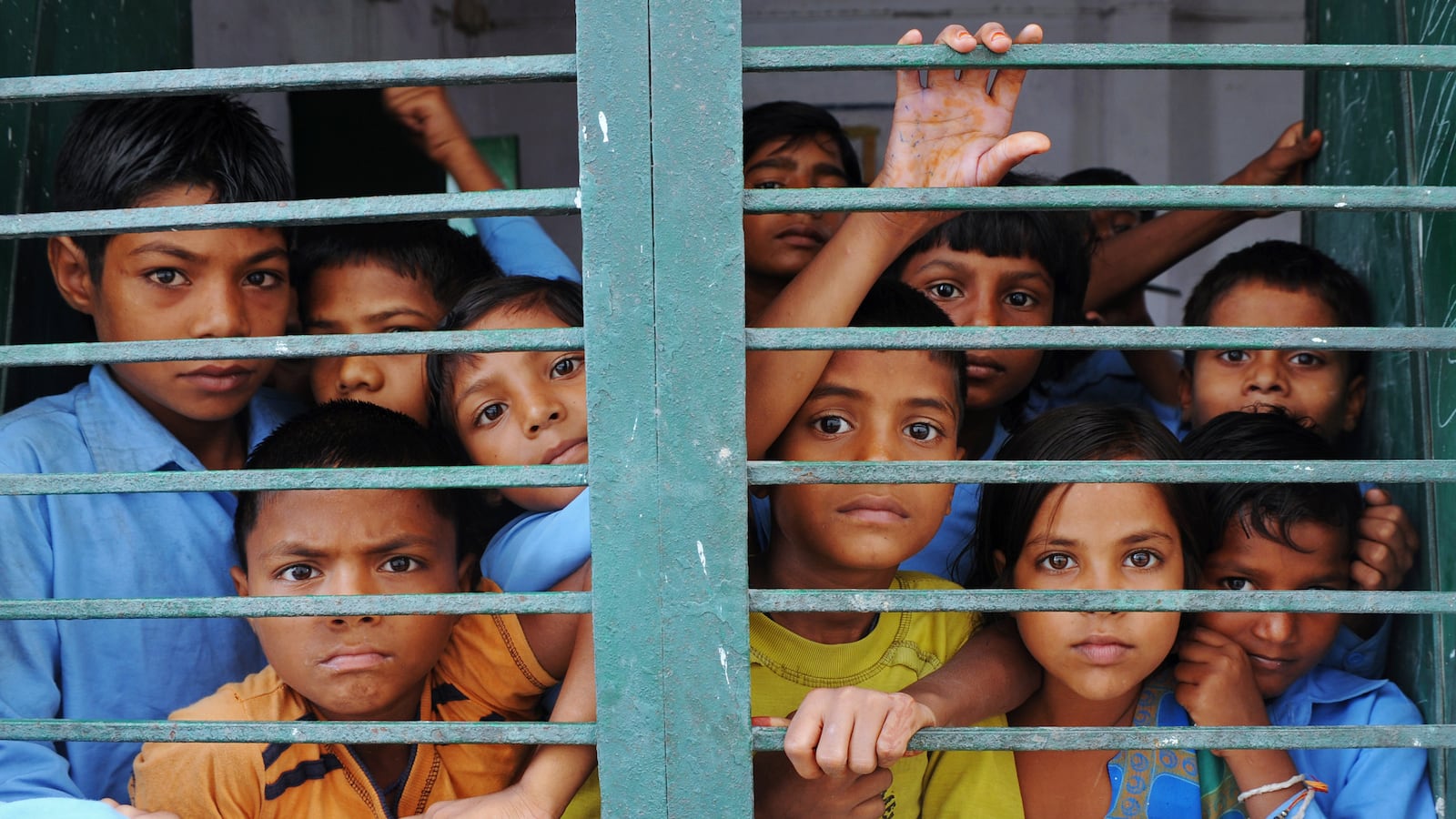At lunch, N is slumped on the table, her food untouched, her face slack, completely unresponsive. From across the room, I watch her friends, some of them also ill, unsuccessfully coaxing her to eat. After a while, I walk over.

“She’s not eating,” one says. “She can’t even sit straight!” Sure enough, when I try to speak to her, her head lolls back and her body crumples against mine, to the point that if I step back she will fall off her stool. Nothing registers. This is N’s second episode like this in two days, and this time the resident doctor is seriously worried. Better take her to the emergency room, he advises.
I pick her up—13 years old, it’s like picking up a largish puppy—and carry her to a waiting car. We rattle along, about 15 miles to a large hospital. Pick-up-and-carry time again, then I have to fill a form at the counter. No more than a couple of minutes later, a stocky doctor emerges from the emergency room and crooks his finger at me.
“Tell me,” he begins. “Did someone force her to come on this trip?”
***
This is the second half of January. I went on an educational trip for my son’s school class, to a foundation that teaches science. I was one of 10 adults chaperoning the group of over 70 13- and 14-year-olds. Twenty-four hours on a train, a week on the campus in a quiet expanse of gently rolling hills in southern India, then the train back.
One day, we climbed into buses for a trip to a village market. Warm day, bumpy roads: no surprise that on the way back, two girls felt nauseous. We stopped, they threw up and felt better. Back at campus, a third girl, A, was in trouble. Not nauseous, but her knees buckled when she tried to stand. Two of us lifted her off the bus, laid her on the ground. She was in a state: head shaking from side to side, screaming occasionally, unable to sit up. Adults and kids alike, we crowded around her, curious, anxious, shouting instructions. What had happened?
Eventually she fell asleep, but already events were overtaking us. A boy vomited and complained of severe stomach cramps. We moved him to my room; I sat with him as he retched and groaned in pain. I couldn’t see what was happening outside, but I could hear it: some kind of hell breaking loose. Kids running here and there, screams and shouts, adults poking their heads in to ask after the boy then rushing off who-knows-where. A girl peeped in to say: “You know what happened to A? It’s all peer pressure.” The doctor arrived. A, he said, should be moved to hospital; two adults put her in a car and left.
Somewhere in all this, N was suddenly unconscious in her room. Several other girls, already on edge with what had happened to A, were distraught at seeing N. Many themselves vomited. Some were suddenly feverish: a few shivering, the rest warm. A boy fainted and then recovered. N regained consciousness and ate some dinner. More panic, more running around. (And all this was recounted to me by other parents later; what must it have been like to see it all firsthand?)
Late at night, the doctor advised moving N—now shivering uncontrollably in a blanket—to the hospital. A colleague and I took her. There, we found A, asleep and quite all right. Seeing her, N had a miraculous recovery. Later that night, all of us crammed into the car and returned to camp.
Mid-day, next day: N is slumped before her lunch, unconscious. Pick her up, back to the hospital: déjà vu all over again.
“No!” I exclaim, bewildered by the doc’s question. “Nobody forced her!”
“Well, is she unhappy about something? Someone or something bothering her?”
“Not that I know of, and she’s ordinarily a bright, cheerful thing. But why do you ask?”
“Because let me tell you straight, she’s not really unconscious,” says the doctor. “This is what we call an ‘intentional sleep.’” Meaning, she’s in what he refers to as a “psychological state.” Nothing physically wrong with her. She has essentially willed herself into this state, likely a way of seeking attention. “I can’t really confront her with this,” he says. “I can’t tell her she’s making it all up. It might push her in a direction we don’t want. But you’re in charge, so you need to understand, that’s probably the issue here.”
My colleague and I look at each other. If N is in a psychological state, what about the other kids in camp? Their vomiting? The anxiety? The chills, the hot flushes? The fainting? The panic? The screaming?
Just what had happened, seemingly all at once, to these perfectly ordinary upper-middle-class kids from a school that regularly makes “best of Mumbai” lists?
Through the second half of 2011, several girls at LeRoy Junior-Senior High School in Corinth, New York, developed a rash of peculiar symptoms, also seemingly all at once. They would let loose sudden shouts and grunts. They would break into Tourette’s Syndrome-like twitches. One girl, perhaps particularly self-aware, actually produced a disturbing clip of herself, in which she snorts repeatedly, runs her fingers across her nose and face, and in between, tells us things about herself.
Everyone was bewildered by the LeRoy outbreak. One theory, for example, was that it was caused by a train wreck in 1970 that spilled a load of cyanide. That proved unfounded. In the end, there was nothing to attribute it to except a bout of collective hysteria: when several people inexplicably develop, all together, the physical symptoms of a disease they don’t actually suffer from. “Victims are often accused of faking it,” one account of the LeRoy incident said “but more often they are suffering real physical symptoms that are psychological in origin.”
Eerily reminiscent of N’s “intentional sleep.”
Mass hysteria probably explains what happened in Salem, Massachusetts, several hundred years ago that resulted in the infamous witch trials there. It happened at LeRoy in 2011. Could some version of it have happened with my son’s young classmates?
Over the years, scientists have argued over whether such hysteria has psychological or neurological causes. Today it is generally considered a psychiatric problem. The origin of the word itself—from the Greek “hustera,” or “womb”—speaks of the impression that it affects mostly women, though wars have produced much the same effects in plenty of male soldiers. There have been cases when excessive anxiety among parents—indeed, hysteria among parents—has set off hysteria in their kids. Investigators have also found that in cases of mass hysteria, one child is often an “index case” that triggers waves of anxiety.
Could A have been such an index case? Could our possibly overwrought adult reaction—carrying her off the bus, surrounding her, shouting—have triggered hysteria among her friends?
Twenty-four hours later, the questions are moot. The kids hold what they call a “ramp walk,” a mock fashion show where we all dress up and strut on a makeshift stage. The star—radiant smile, pretty and prancing like she was to the catwalk born—is N.
All is right with the world. Hysteria, all in the mind.






